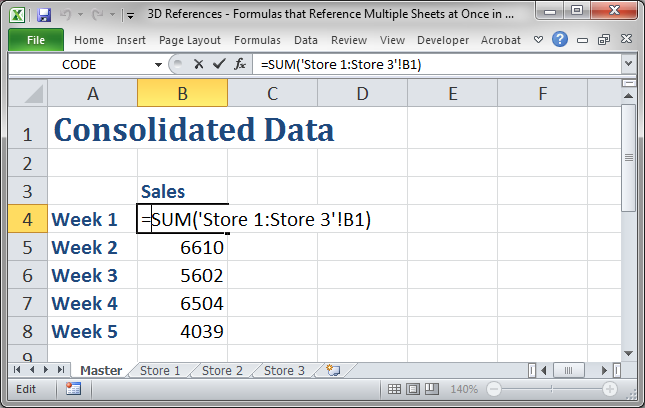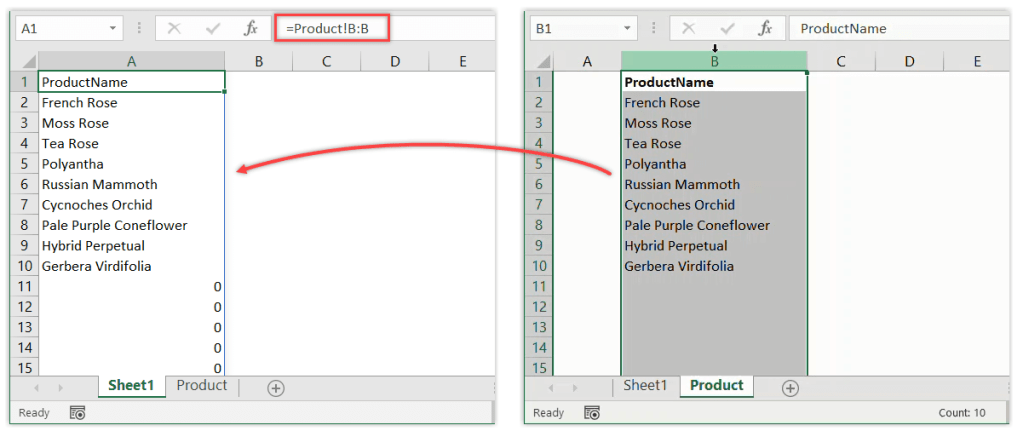5 Ways to Link Excel Sheets with Formulas

Linking sheets within Excel can transform your data management process, allowing for seamless integration and automatic updates across different worksheets or even workbooks. Here are five effective methods to link Excel sheets using formulas, each tailored to enhance productivity and data accuracy.
1. Using Cell References

The simplest way to link sheets is through direct cell references:
- Click the cell where you want the linked data to appear.
- Type the equal sign (=) to start a formula.
- Click on the sheet tab you want to link from, then click the cell containing the data you wish to pull.
- Press Enter.
This creates a formula like: =Sheet1!A1, pulling the data from cell A1 on Sheet1. Here's an example table showing linked cells:
| Sheet | Reference Formula | Linked Data |
|---|---|---|
| Sheet2 | =Sheet1!A1 | Data from A1 of Sheet1 |
| Sheet3 | =Sheet1!B2 | Data from B2 of Sheet1 |

💡 Note: Ensure the sheets are named correctly to avoid errors in references.
2. Employing 3D References

For consistent data across multiple sheets, 3D references are invaluable:
- Select the cell where you want to place the aggregated data.
- Type
=SUM(or another function that suits your purpose. - Select the range across sheets by clicking the first sheet tab, holding Shift, and clicking the last sheet tab, then select the cells.
- Complete the formula and press Enter.
This approach aggregates data from the same cell or range on multiple sheets:
=SUM(Sheet1:Sheet3!A1)
This formula will sum the value of cell A1 across sheets from Sheet1 to Sheet3.
💡 Note: Make sure all sheets have the same structure for 3D references to work correctly.
3. Utilizing the INDIRECT Function

To make cell references dynamic, you can use the INDIRECT function:
- In a cell, type
=INDIRECT(. - Enter the sheet name and cell address as a string, like
“Sheet1!A1”. - Close the function with
).
This formula will retrieve data based on the text string provided:
=INDIRECT("Sheet1!A1")
This is particularly useful when referencing data from named ranges or when you need to change references dynamically:
- Create a cell that stores the sheet name (e.g., A1).
- In another cell, enter
=INDIRECT("'" & A1 & "'!A2")to pull data from cell A2 of the sheet named in A1.
💡 Note: The INDIRECT function won't change if the referenced sheet's name changes unless you update the reference.
4. Creating Named Ranges

Named ranges can simplify linking by giving cells or ranges a memorable name:
- Go to Formulas > Name Manager or use Ctrl + F3.
- Create a named range and assign it to a specific cell or range.
- To link, use the named range in your formulas, e.g.,
=AnnualSalesinstead of=Sheet1!B1.
This method makes formulas easier to read and maintain:
=SalesData * TaxRate
Where SalesData could refer to a range on another sheet, and TaxRate might be defined locally.
💡 Note: Named ranges are workbook-wide, so ensure they're unique to avoid confusion.
5. External Workbook Linking

To connect data across different Excel workbooks:
- Open both workbooks.
- In the destination workbook, start a formula with the equal sign (=).
- Switch to the source workbook, select the sheet, and then the cell you want to link.
- Return to the destination workbook and press Enter.
The formula looks like:
=[Book1.xlsx]Sheet1!A1
This links cell A1 from Sheet1 in Book1.xlsx to the active cell in your current workbook:
- Use this method for occasional data pulls or for setting up dashboards across multiple reports.
In conclusion, linking Excel sheets using formulas can significantly streamline your data management and analysis tasks. By implementing these methods, you not only save time but also ensure that your data remains consistent and up-to-date, providing a reliable foundation for decision-making. The key to mastering these techniques lies in understanding when and how to apply them effectively to fit your specific needs, whether it’s for quick data transfer between sheets, aggregating data, or linking across different workbooks.
How do I prevent circular references when linking sheets?

+
To avoid circular references, ensure that cells do not reference each other in a loop. If cell A1 in Sheet1 references cell B1 in Sheet2, then B1 shouldn’t reference back to A1 or to any cell that indirectly references A1.
Can I link cells from different Excel files without opening them?

+
Yes, but you need to establish the link when the source file is open. After that, the data will update when the destination file is opened, provided the source file is in the same location and accessible.
How do I update links if source data changes?

+
Excel updates links automatically when both files are open. If source data changes while the destination file is closed, you can manually update links by going to Data > Edit Links and selecting Update Values.